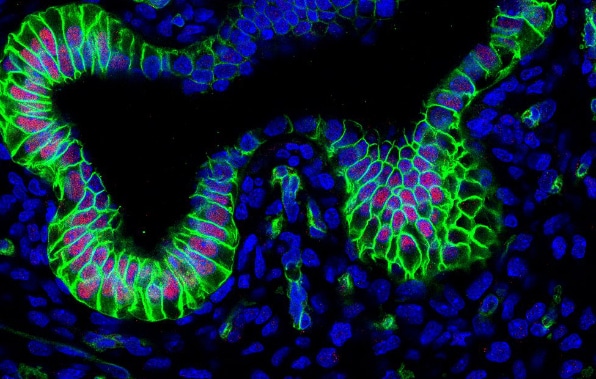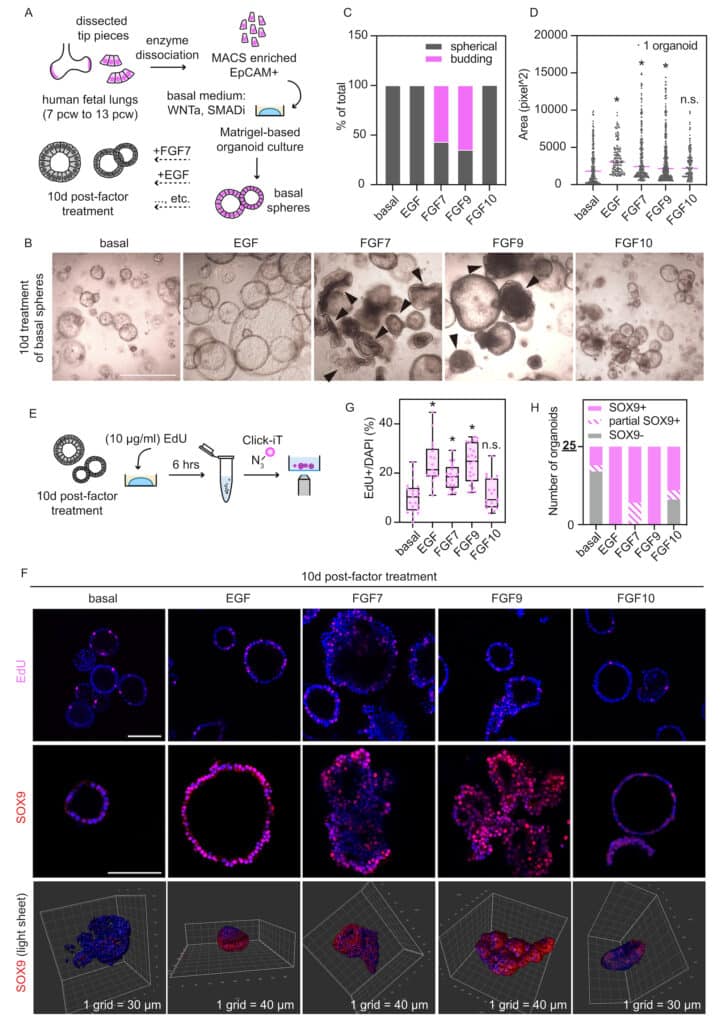Transposon activity shapes fungal evolution
November 12, 2021
Read more
This signalling pathway was previously reported to control cell growth and cell identity. Taking a reductionist approach using human foetal lung organoids, the lab has shown that RTK signalling also controls cell shape and that cells are highly sensitive to levels of signalling via this pathway. These findings reveal a new fundamental role for RTK signalling pathway which is likely to be applicable to organs in many species. The project has been highly collaborative within the Gurdon Institute with Dr Richard Butler from the imaging facility developing a new pipeline for human organoid image analysis.
Liu SSun DButler RRawlins EL. RTK signalling promotes epithelial columnar cell shape and apical junction maintenance in human lung progenitor cells. Development 2023; dev.201284. DOI: 10.1242/dev.201284.

Multipotent epithelial progenitor cells can be expanded from human embryonic lungs as organoids. and maintained in a self-renewing state using a defined medium. The organoid cells are columnar, resembling the cell morphology of the developing lung tip epithelium in vivo. Cell shape dynamics and fate are tightly coordinated during development. We therefore used the organoid system to identify signalling pathways that maintain the columnar shape of human lung tip progenitors. We found that EGF, FGF7 and FGF10 have distinct functions in lung tip progenitors. FGF7 activates MAPK/ERK and PI3K/AKT signalling and is sufficient to promote columnar cell shape in primary tip progenitors. Inhibitor experiments show that MAPK/ERK and PI3K/AKT signalling are key downstream pathways, regulating cell proliferation, columnar cell shape and cell junctions. We identified integrin signalling as a key pathway downstream of MAPK/ERK in the tip progenitors; disrupting integrin alters polarity, cell adhesion and tight junction assembly. By contrast, stimulation with FGF10 or EGF alone is not sufficient to maintain organoid columnar cell shape. This study employs organoids to provide insight into the cellular mechanisms regulating human lung development.